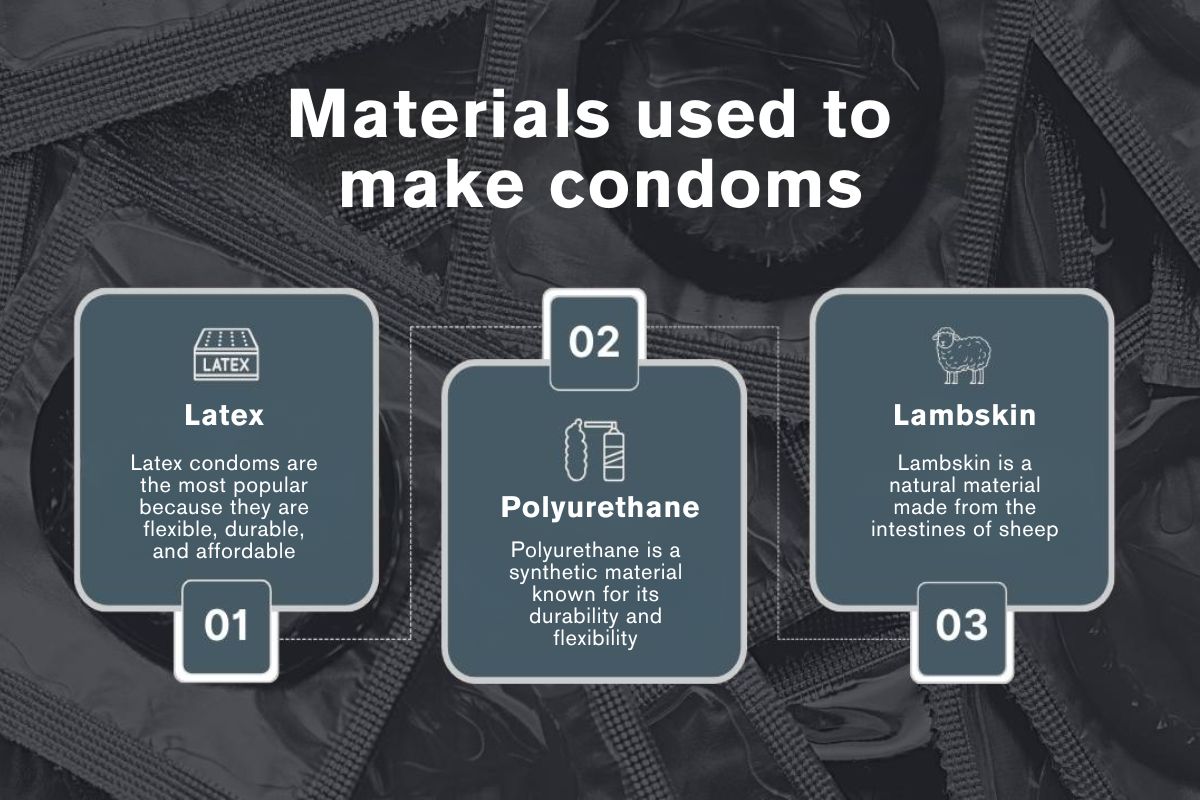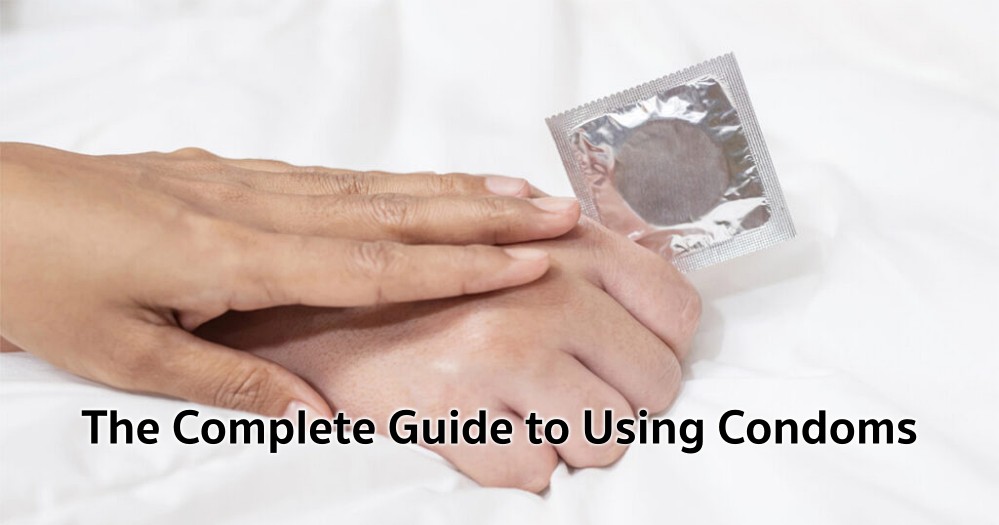The correct Using Condoms is crucial for safe sexual activities and taking responsibility for both oneself and one’s partner. A condom is a thin barrier, typically made of latex or polyurethane, that is worn over the male genitalia before insertion into the vagina or anus during intercourse. The primary purpose of a condom is to act as a protective barrier, preventing direct contact between the genitalia and bodily fluids.
By using a condom correctly, it plays an important role in preventing both unwanted pregnancies and the transmission of sexually transmitted infections (STIs). Understanding and using condoms properly ensures healthy sexual relationships, consent, and awareness of the potential risks associated with sexual health.
How to use condoms and how to choose the right one
| Condom size | Circumference size (mm.) |
|---|---|
| 49 | 49-52 |
| 52 | 52-55 |
| 55 | 55-58 |
| 58 | 58-61 |
| 61 | 61-64 |
| 64 | 64-67 |

Materials used to make condoms
Condoms are made from various materials, each with its own characteristics. The most commonly used materials today include:
- Latex:
Latex condoms are the most popular because they are flexible, durable, and affordable. However, latex condoms may cause allergic reactions in some individuals. - Polyurethane:
Polyurethane is a synthetic material known for its durability and flexibility. Condoms made from polyurethane do not cause allergies, unlike latex condoms, but they are more expensive. - Lambskin:
Lambskin is a natural material made from the intestines of sheep. Condoms made from lambskin are flexible, durable, and thin, providing a natural feel. However, they are more likely to tear than latex or polyurethane condoms.
Additionally, there are condoms made from other materials such as silicone, plastic, and silk. However, these types are not as widely used or popular as latex, polyurethane, or lambskin condoms.

The advantages and disadvantages of materials used to make condoms are as follows:
| material | strength | weakness |
|---|---|---|
| Latex | Flexible, comfortable to wear, durable, inexpensive, good protection against pregnancy and diseases. | There is a chance of causing an allergic reaction in people with a history of latex allergies or causing irritation. |
| Polyurethane | Flexible, comfortable to wear, resistant to friction, hypoallergenic, thinner than latex material, good at preventing pregnancy and disease. | More expensive than latex materials, not very resistant to heat and sunlight. |
| Sheepskin | Flexible, durable, thin | Easily tampered with |
Lubricated condoms vs. unlubricated condoms
Check the expiration date and packaging.
Checking the expiration date of a condom is a very important step before use. Over time, the materials used to make condoms degrade, reducing their effectiveness and increasing the likelihood of breakage. Expired condoms cannot reliably prevent unwanted pregnancies or sexually transmitted infections (STIs), making them unsafe and unreliable. Therefore, you should always check the expiration date printed on the condom packaging to ensure that it is still within its usable period before use.

How to safely open condom packages
Opening a condom package carefully is crucial to maintaining the integrity and effectiveness of the condom. Follow these steps to properly open the package:
- Gently tear open the package using your hands. Avoid using sharp objects like scissors, teeth, or nails, as these could accidentally tear the condom inside.
- Once the package is open, carefully remove the condom, being cautious not to puncture it with your nails.
- Unroll the condom and check it thoroughly before use to ensure there are no tears or defects. If the condom is expired or damaged, discard it and use a new one.
By handling the condom with care, you ensure that it remains intact and effective for protection.
Using Condoms
Proper disposal of condoms
It is important to properly dispose of used condoms to prevent the spread of germs and infections. Used condoms should be discarded in a covered trash bin to avoid contact with others. They should not be flushed down the toilet or drain, as they can cause blockages.
Here are the steps for properly disposing of a used condom:
- Remove the Condom: Take off the condom before the penis becomes flaccid.
- Tie the End: Secure the open end of the condom to prevent semen from leaking out.
- Wrap the Condom: Wrap the used condom in a tissue or paper towel.
- Dispose Properly: Place the wrapped condom in a covered trash bin.
- If a covered trash bin is unavailable, wrap the condom in several layers of tissue or paper towel, then place it in a plastic bag, seal it tightly, and dispose of it in a regular trash bin.
Used condoms are not classified as biohazardous waste, but they should still be disposed of carefully to prevent the spread of infections and germs.
Read more interesting articles
In summary, understanding the correct way to use condoms is an essential part of responsible sexual behavior and plays a key role in maintaining sexual health. Condoms serve two main purposes: providing effective protection against both unwanted pregnancies and sexually transmitted infections (STIs). By following the proper steps in choosing, purchasing, and using condoms consistently, individuals can significantly reduce risk and enjoy safe intimacy without worry.
Condoms are an easy and effective way to prevent unwanted pregnancies and STIs. Using them correctly is an important aspect of responsible sexual behavior and shows respect for your partner.


